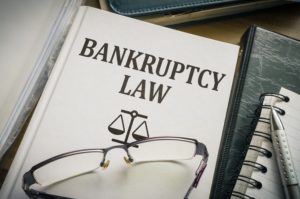
The general rule in bankruptcy is that unsecured creditors are not entitled to post-petition interest on their allowed claims.[1] An exception to this rule is found in Section 726(a)(5) of the Bankruptcy Code which provides for the payment of “interest at the legal rate from the date of filing of the petition,” on any claim paid under paragraphs 1 through 4 of §726(a). Similarly, some courts have held that Section 1129(a)(7) of the Bankruptcy Code suggests that post-petition interest is allowable on unsecured claims when the estate is solvent and a surplus is anticipated after payment of the principal balance of all claims.
However, there is a split of authority as to the rate of interest that should be used. The dispute revolves around the meaning of the term “legal rate of interest” found in §726(a)(5). One interpretative approach is known as the “state law approach”. Under the state law approach, if a contract exists between the Debtor and creditor that establishes an interest rate on the outstanding balance, the contract rate is the “legal rate.” Alternatively, if a specific state statute exists that establishes a rate of interest for a creditor, that statutory rate is the “legal rate.”
In re Carter, 220 B.R. 411 (Bankr.D.N.M.1998) followed the state law approach. In doing so, the court held that if it were to modify the originally contracted interest rate, it would result in a windfall to the debtor, with property returned to the debtor at the creditor’s expense. Carter held that in situations where the solvent estate produces a sufficient surplus from which to pay interest in full to all claimants at the rate(s) prescribed in their underlying agreements, contracts or judgments, then those interest rates should be applied by the court. The court noted, however, that it did “not have to determine what interest rate should be applied when there is not a sufficient surplus to pay interest in full at contract rates to all claimants.” Carter suggested that under this latter scenario, the “federal judgment rate approach,” described in more detail below, might be appropriate.[2]
Similarly, in Colfin Bulls Funding A, LLC v. Paloian (In re Dvorkin Holdings, LLC, 547 B.R. 880 (N.D.Ill.2016), the court found no clear evidence in in §726(a)(5) of congressional intent to abandon the “solvent debtor exception” recognized in pre-Code cases or to impose a uniform rate of pendency interest. Id. at 893-94. The Dvorkin court concluded that the creditor in that case was entitled to postpetition interest at its contract rate, noting that “in the case of a chapter 11 surplus bankruptcy estate that is large enough to pay in full all unsecured creditors’ claims plus postpetition interest, §726(a)(5) does not limit a creditor with a valid contract to the Federal Judgment Rate.”
The same conclusion was reached in In re Hicks, 653 B.R. 562 (Bankr.N.D.Ill.2023). Here, the court stated that legal rate, at least as was afforded by the Supreme Court in later cases, was the applicable state law rate.
Given the clear and controlling case law on the subject, there can be little doubt that in relation to the use of the term “legal rate” in pre-Bankruptcy Code practice had an accumulated settled meaning as to both practices. It meant the rate applicable under state law.[3]
Addressing the alternative “federal judgment rate” referenced below, the court stated that while it may be true that having a uniform rate would simplify a trustee’s responsibilities, treat creditors equally by giving them all the same interest rate, and would promote judicial efficiency, “[t]hese are legislative concerns, however, not judicial ones. It is for Congress to legislate to the results the United States Trustee and the Chapter 7 Trustee seek, and it has not done so. Id. at 573.
The alternative approach is the “federal judgment rate approach.” Under this approach, the “legal rate” is established by 28 U.S.C. § 1961(a). Beguelin v. Volcano Vision, Inc. (In re Bequelin, 220 B.R. 94 (9th Cir.BAP 1998) adopted this approach. The court found particularly significant the convenience and predictability for pro-rata distribution which results from the application of the federal judgment rate. As stated by the court:
Use of the federal judgment rate for all creditors in a case provides bankruptcy trustees with an efficient and inexpensive means of calculating the amount of interest to be paid to each creditor. It is not hard to imagine the administrative nightmare that bankruptcy trustees would otherwise face if they were required to calculate a different interest rate, based on different source of interest rate, for each creditor…The burden of requiring the trustee to apply different rates of interest according to the rate provided on the contract is a compelling reason not to have to rely on various state legal interest rates. The logistical difficulties and expense involved in doing so would be particularly burdensome in those cases that involve a large number of creditors from multiple jurisdictions.
In In re Dow Corning Corp., 237 B.R. 380 (Bankr.E.D.Mich.1999), the court also adopted §1961(a) in establishing interest at the legal rate. In doing so, the court noted that interest at the legal rate could not mean the contract rate because it would be contrary to the equitable distribution of assets. The court stated that “interest at the legal rate” is, and always has been commonly understood to mean a rate of interest fixed by statute. The Court noted that it is more likely than not that when Congress enacted §726(a)(5) it intended for the phrase to carry this ordinary meaning. Id. at 401. The best evidence of this fact is seen in the case law, with the court noting that “[f]or over 100 years courts have consistently used the term to mean a rate of interest fixed by statute.” Id. at 402.
The Court also found persuasive the fact that Congress, in earlier drafts of §726(a)(5) rejected use of the language “interest on claims allowed,” in favor of the more specific “interest at the legal rate.” “Where Congress uses terms that have accumulated settled meaning under the common law, a court must infer, unless a statute otherwise dictates, that Congress means to incorporate the established meaning of those terms.” Id. at 404. When the Code was enacted in 1978, the phrase “interest at the legal rate” had long since acquired a well-established and commonly understood meaning – rate of interest fixed by statute. The court noted the fact that “legal rate” is proceeded by the definite article “the” in §726(a)(5), which indicated that Congress intended for a single source to be used for the calculation of post-petition interest, as opposed to using whatever rate of interest happened to be in the contract.
The court further noted that the purpose of post-petition interest is to compensate a successful creditor for any delay that occurs between the time of entitlement (the petition date) and time of payment. Given this purpose, the court recognized that post-judgment interest was procedural. The court then went on to find that all procedural matters arising in federal court are decided by federal law. Currently, in federal court, it is settled that post-judgment interest is determined by federal law.
Since post-petition interest performs the same function as post-judgment interest, it too can be rationally classified as procedural. Moreover, bankruptcy law is a federal law. From this it follows that the computation of post-petition interest in bankruptcy cases must be determined by reference to federal law, which of course means a federal statute. Id. at 406
In a subsequent decision, In re Dow Corning Corp., 244 B.R. 678 (Bankr.E.D.Mich.1999), the court clarified its position, especially in the context of a cram-down under section 1129(b), which provides the additional requirement that the plan be “fair and equitable.”
Of course, §726(a)(5) is made potentially relevant to chapter 11 by the “best-interests-of-creditors test,” which requires that an impaired claim-holder who does not accept the proposed plan must “receive . . . under the plan . . . property of a value . . . that is not less than the amount that such holder would . . . receive . . . if the debtor were liquidated under chapter 7.” Application of this test in the case of a solvent chapter 11 estate means that the claim-holder is entitled to postpetition interest and accordance with 28 U.S.C. §1961.
But what must be remembered is that by its won terms, the best-interests test simply establishes a minimum payment requirement. . . .Thus the upshot of the best-interests test is that the creditor of a solvent chapter 11 estate must receive postpetition interest at a rate which is at least equal to the federal statutory rate. We are unwilling to infer from this that Congress intended to preclude creditors from being paid at a higher rate. Id. at 686.
In re Best, 365 B.R. 725 (Bankr.W.D.Ky.2007) also followed the “federal judgment rate.” The court noted that statutory construction supported the use of the federal judgment rate. The court explained that Congress used the specific phrase “at the legal rate” which supported the finding of use of a single source to calculate post-petition interest. The federal judgment rate also promotes uniformity within federal law which makes sense because once a petition is filed, federal law determines a creditor’s rights, not state law. Id. at 727.[4]
Similarly, In re Mullins, 2021 WL 2948685 (Bankr.D.Mass. July 13, 2021) followed the federal judgment rate approach. In doing so, the court stated:
In considering the most logical construction of that phrase to refer to a singular rate of interest in the context of the legislative goal of uniformity in treatment of similar claims and consolidated, efficient administration of bankruptcy proceedings, it is easy to conclude Congress intended that “the legal rate” would be the federal judgment rate. The administrative burden on bankruptcy courts to determine other potentially applicable rates could be substantial and result in increased costs and delays in administration of Chapter 7 cases. Additionally, applying contract rates, judgment rates, and other potential rates determined under state law could result in disparity among similar creditors where certain creditors receive smaller distributions on §726(a)(5) claims and bear a greater burden because of delays in administration of Chapter 7 cases than other creditors who receive higher pendency interest rates.[5]
_______________________________________
[1] See, 11 U.S.C. §502(B)(2).
[2] Other cases to apply this state law approach are the following: Matter of Terry Ltd. Partnership, 27 F.3d 241 (7th Cir.1994) (dealing with the issue in the context of Section 506(d) of the Bankruptcy Code in a dispute between a second and third mortgage lender); In re Anderson, 69 B.R. 105 (9th Cir.BAP 1986); In re Adcom, Inc., 82 B.R. 2 (D.Mass.1998); In re A&L Properties, 96 B.R. 287 (C.D.Cal.1998); In re Rivera, 116 B.R. 117 (Bankr.D.P.R.1990); In re Beck, 128 B.R. 572, 573 (Bankr.E.D.Okla.1991); In re West Texas Marketing Corp., 155 B.R. 399, 402-03 (Bankr.N.D.Tex.1993); In re Schoeneberg, 156 B.R. 96 (Bankr.W.D.Tex.1993); Matter of Greensboro Lumber Co., 183 B.R. 316, 320 (Bankr.N.D.Ga.1995); In re Huang, 192 B.R. 184, 186 (Bankr.N.D.Ill.1996); In re Boehm, 202 B.R. 99, 100 (Bankr.N.D.Ill.1996); and In re Boyer, 90 B.R. 200, 201 (Bankr.D.S.C.1998).
[3] Id. at 568.
[4] See also, In re Cardelucci, 285 F.3d 1231 (9th Cir.2002) (Section 726(a)(5) requires that creditors of a solvent debtor receive postpetition interest at “the legal rate” – a term we have said refers to the federal judgment rate established by 28 U.S.C. §1961(a)); In re Godsey, 134 B.R. 865 (Bankr.M.D.Tenn.1991); and In re Country Manor of Kenton, 254 B.R. 179 (Bankr.N.D.Ohio 2000)
[5] Id. at *19.
Matthew T. Gensburg
[email protected]

